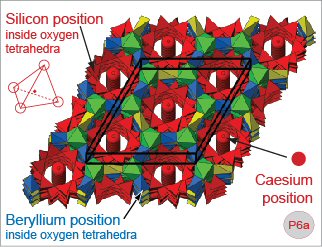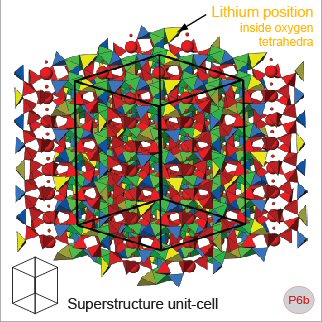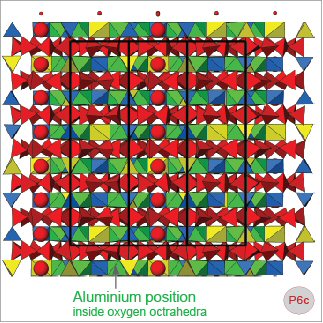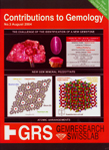


|
|
Fig.P6a-c
NEW RHOMBOHEDRAL SUPERSTRUCTURE OF PEZZOTTAITE.
Crystal structure model with oxygen polyhedra surrounding
a cat ion in the centre. Yellow
oxygen tetrahedra: containing lithium (Li),
blue tetrahedra with beryllium
(Be), red tetrahedra
with silicon (Si), green
octahedra with aluminium (Al), and
red spheres indicating caesium (Cs) positions.
Solid outlines mark the superstructure cell. Substitutions
in tetrahedral and octahedral positions by other elements
such as Ti, Ca, Mn, Fe, Na, K, Rb and Sc see Laurs
et al. (2003) and Box 4B.
Rotating the crystal
model of pezzottaite (P6a-c) shows the arrangement
of caesium (Cs) in the direction of the c-axis within
the channels. The Cs atoms are surrounded by six-membered
rings involving Si, and 2 different types of twelve-membered
rings. One ring is composed of Be and Al and the second
composed of Be, Al and Li. With further rotation of
the unit-cell, the complexity of the pezzottaite crystal
structure becomes more clearly visible and the third
dimension of the complicated crystal structure is
more exposed (Fig. P6b). In a view perpendicular to
the c-axis (Fig. P6c), the arrangement of Cs in the
channels in the direction of the c-axis become visible.
In the case of beryl, channels may be partially occupied
by H2O, while in pezzottaite, the corresponding position
is mainly occupied by Cs.
|








